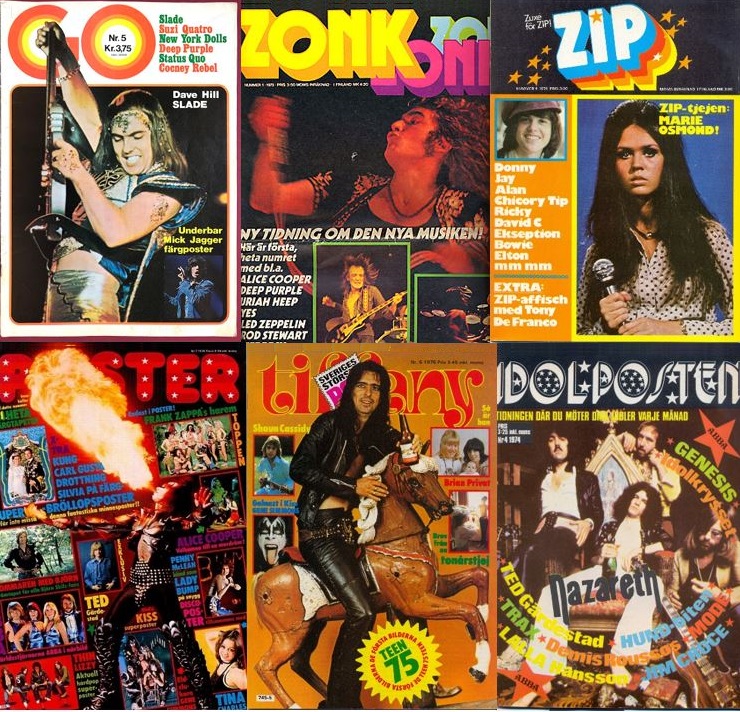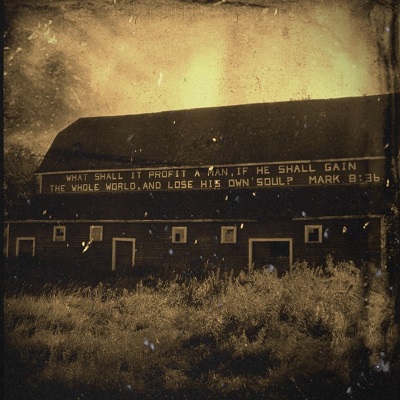 30 years ago I bought a small condo. It was a real safe investment. At least, that's what the real estate agent told me when he shook my hand after closing the deal. I remember him clearly. He had small sweaty chipolata fingers and a serious scurf problem. In fact, his worn-out club blazer with gold-coloured buttons was covered with it. A couple of years later I started a family and we needed a bigger rented apartment. Of course, this coincided with a bank-, finance- och housing crisis in Sweden, not completely unlike the US subprime mortgage crisis of 2007–2008. I lost more than half of my "investment". The new condo owner, who knew perfectly well of my unfortunate situation, was a tactless greedy woman. She had the nerve to ask me if she could have the padlock to the cellar storage. However, I still had some self-respect and dignity left in me and declined: "the padlock isn't included". Proud but poor. I was left with a padlock and a debt. It took some years to get out of debt. "We should not look back unless it is to derive useful lessons from past errors, and for the purpose of profiting by dearly bought experience." said George Washington. Live and learn. Some people have a natural instinct for making more money from money. This isn't me. I clearly haven't got the right disposition and, maybe more important, the slightest interest.
30 years ago I bought a small condo. It was a real safe investment. At least, that's what the real estate agent told me when he shook my hand after closing the deal. I remember him clearly. He had small sweaty chipolata fingers and a serious scurf problem. In fact, his worn-out club blazer with gold-coloured buttons was covered with it. A couple of years later I started a family and we needed a bigger rented apartment. Of course, this coincided with a bank-, finance- och housing crisis in Sweden, not completely unlike the US subprime mortgage crisis of 2007–2008. I lost more than half of my "investment". The new condo owner, who knew perfectly well of my unfortunate situation, was a tactless greedy woman. She had the nerve to ask me if she could have the padlock to the cellar storage. However, I still had some self-respect and dignity left in me and declined: "the padlock isn't included". Proud but poor. I was left with a padlock and a debt. It took some years to get out of debt. "We should not look back unless it is to derive useful lessons from past errors, and for the purpose of profiting by dearly bought experience." said George Washington. Live and learn. Some people have a natural instinct for making more money from money. This isn't me. I clearly haven't got the right disposition and, maybe more important, the slightest interest.
That being said, even a blind hen sometimes finds a grain of corn. I'm extremely satisfied with the purchase of two gadgets, a hairclipper and an Ipod. Let's start with the hairclipper. In 1994 I made it happen and bought myself a Moser electric harclipper. My thick wavy hair was by then long gone and I did not really have a hairstyle (I cut my hair once a week so the money I have saved over the years isn't negligible). The Moser electric hairclipper Type 1400 just goes on and on with a buzzing and reassuring sound. A drop of oil now and then is all that it asks for. Let's go over to the Ipod. Most people struggle to maintain one's self-image. I'm no exception. In my lofty inner monologues I'm an owner of an old high-end system, read more here (opens in a new window). The truth is that nowadays I listen far more often to music on my old Ipod Touch than on the high-end system. I bought the Ipod in 2009 and thought that it was another throwaway electronic device from China. It was 3rd generation and state of the art at the time. It still functions after more drops to the floor than I can count and endless playing hours. The Ipod even survived an update of new software a couple of months ago. One by one the apps have ceased to work. It doesn't matter. I'm only interested in the Itunes app, which is Apple's most hated app. The computer-device interaction leave a lot to be desired. Transferring and synchronizing is hell on Earth. My advice to you: whatever yo do, choose manual synchronization. The user-friendliness comes once you have transferred your files to the Ipod. The price was very high in 2009, but if you distribute the cost over time, and especially over total playing time, it turns out to be together with the Moser electric hairclipper, the best return on investment ever.

The history of Swedish pop and rock magazines in the 1970s remains to be written. Some very basic but nevertheless important work has been carried out by a Swedish website, read more here (opens in a new window). It contains a brief introduction, publisher, year class and all covers of the magazines published from the early 1970s and onwards. Sometimes the hip magazines come up for sale at Tradera (Swedish Ebay). I never place a bid. But, I admire the dedication to document for posterity. After all, this is also what I do.
 Uncle Sinner's third proper album "Trouble of this World" was released on March 16, 2020 and coincided with the covid-19 virus outbreak (the title is well-timed and fitting). My original plan was to publish the review on the release date, but other things came between. A preface for those of you who are unfamiliar to "dark canadiana". Uncle Sinner started out as a two-piece band with Uncle Sinner on vocals, banjo and guitar and Matt "Fuller Vengeance" McLeod on vocals, bass, mandolin, guitar, percussion and banjo. They parted ways a couple a years ago and Uncle Sinner continued on his own. The new album is dedicated to the memory of "Fuller Vengeance". Uncle Sinner wrote this on his Facebook page on October 8, 2018. "Sad to report that Matt McLeod, who produced my first album and played with me under the name Fuller Vengeance, died recently. Matt was a great guy and a talented, versatile musician. I can honestly say that without Matt agreeing to record me, and then encouraging me to share those recordings, there would be no Uncle Sinner." The album cover pictures an absorbed Uncle Sinner. The album art and design is created by Agnieszka Ledochowska (who also created the album art for the debut album "Ballads and Mental Breakdowns" and a couple of other Devil's Ruin Records releases). Uncle Sinner seems to thrive and seek inspiration outside and inside derelict buildings in the Interlake region between Lake Winnipeg and Lake Manitoba (a.k.a. ”Sinterlake” in the world of Uncle Sinner). Uncle Sinner is also known for holding and smoking cigarettes to such an extent it makes the Marlboro Man look like a health freak. The new album is recorded, mixed and mastered by Uncle Sinner in his basement. Let's go over to the album and walk it trough.
Uncle Sinner's third proper album "Trouble of this World" was released on March 16, 2020 and coincided with the covid-19 virus outbreak (the title is well-timed and fitting). My original plan was to publish the review on the release date, but other things came between. A preface for those of you who are unfamiliar to "dark canadiana". Uncle Sinner started out as a two-piece band with Uncle Sinner on vocals, banjo and guitar and Matt "Fuller Vengeance" McLeod on vocals, bass, mandolin, guitar, percussion and banjo. They parted ways a couple a years ago and Uncle Sinner continued on his own. The new album is dedicated to the memory of "Fuller Vengeance". Uncle Sinner wrote this on his Facebook page on October 8, 2018. "Sad to report that Matt McLeod, who produced my first album and played with me under the name Fuller Vengeance, died recently. Matt was a great guy and a talented, versatile musician. I can honestly say that without Matt agreeing to record me, and then encouraging me to share those recordings, there would be no Uncle Sinner." The album cover pictures an absorbed Uncle Sinner. The album art and design is created by Agnieszka Ledochowska (who also created the album art for the debut album "Ballads and Mental Breakdowns" and a couple of other Devil's Ruin Records releases). Uncle Sinner seems to thrive and seek inspiration outside and inside derelict buildings in the Interlake region between Lake Winnipeg and Lake Manitoba (a.k.a. ”Sinterlake” in the world of Uncle Sinner). Uncle Sinner is also known for holding and smoking cigarettes to such an extent it makes the Marlboro Man look like a health freak. The new album is recorded, mixed and mastered by Uncle Sinner in his basement. Let's go over to the album and walk it trough.
 The new album contains 13 songs plus two bonus tracks (they are not reviewed). The songs on the album are both original and traditional songs. Let's start with an obvious remark. Uncle Sinner sticks to his working methods. The songs are not traditional in the traditional sense. The songs has been brought to the smithy and forged into a new shape and form, but still possible to discern. The album starts off with "Creation Myth". It contains tons of exquisite banjo playing. It's a strong opening song. It ends with an arrangement of "Greasy Coat" (traditional). The vocals is raspy and Uncle Sinner's voice cracks here and there. The raw and unpolished style fits the purpose. The second song is "Gallows Pole". It was made popular by no less than Led Zeppelin on their third album. An unusual pick if I may say so. Uncle Sinner's take on the song is innovative and twangy. Compared with Zeppelin's version, the tempo is slower and the dark lyrics stands out more clearly. "I didn’t bring you no silver, I didn’t bring you no gold / I just came to watch you swinging high up from the gallows pole". The third song "Trouble of this World", is a gospel-like hymn. The message is clear. Death is the greatest liberator. We are done with this world. We want to leave this earthly world for the heavenly world. "Well soon I’m gonna burn down what, what needs to burn / I’m going home to live with God, my Lord". The fourth song is called "Glory in the Meeting House", sounds like an Irish or Scottish jig. The song is instrumental with banjo and fiddle. The fifth song is "Motherless Child". The song has been covered by many artists in very different ways; from Boney M (disco version) to Van Morrison (hymnal version). Uncle Sinner's contribution to the long list of covers is a slow, heartfelt blues version. "Sometimes I feel like a motherless child / And a long way from home". Blues isn't my cup of tea, but reluctantly I like this version. The sixth song is "Long Gone", which is more catchy and upbeat with harmonica. Brute force, but not unsensitive. The seventh song is "Rocky Island", true and unadulterated Irish romanticism. So far, so good.
The new album contains 13 songs plus two bonus tracks (they are not reviewed). The songs on the album are both original and traditional songs. Let's start with an obvious remark. Uncle Sinner sticks to his working methods. The songs are not traditional in the traditional sense. The songs has been brought to the smithy and forged into a new shape and form, but still possible to discern. The album starts off with "Creation Myth". It contains tons of exquisite banjo playing. It's a strong opening song. It ends with an arrangement of "Greasy Coat" (traditional). The vocals is raspy and Uncle Sinner's voice cracks here and there. The raw and unpolished style fits the purpose. The second song is "Gallows Pole". It was made popular by no less than Led Zeppelin on their third album. An unusual pick if I may say so. Uncle Sinner's take on the song is innovative and twangy. Compared with Zeppelin's version, the tempo is slower and the dark lyrics stands out more clearly. "I didn’t bring you no silver, I didn’t bring you no gold / I just came to watch you swinging high up from the gallows pole". The third song "Trouble of this World", is a gospel-like hymn. The message is clear. Death is the greatest liberator. We are done with this world. We want to leave this earthly world for the heavenly world. "Well soon I’m gonna burn down what, what needs to burn / I’m going home to live with God, my Lord". The fourth song is called "Glory in the Meeting House", sounds like an Irish or Scottish jig. The song is instrumental with banjo and fiddle. The fifth song is "Motherless Child". The song has been covered by many artists in very different ways; from Boney M (disco version) to Van Morrison (hymnal version). Uncle Sinner's contribution to the long list of covers is a slow, heartfelt blues version. "Sometimes I feel like a motherless child / And a long way from home". Blues isn't my cup of tea, but reluctantly I like this version. The sixth song is "Long Gone", which is more catchy and upbeat with harmonica. Brute force, but not unsensitive. The seventh song is "Rocky Island", true and unadulterated Irish romanticism. So far, so good.
 The second obvious remark is that Uncle Sinner is true to his mission statement: "adapting traditional American music for his own purposes". The eight song is a Blind Willie Johnson song, "Cant Keep From Crying". Great interpretation. The ninth song "God is Not Dead (He’s Still Alive) has a distinct "O Brother, Where Art Thou?" vibe. The song is built more around the vocals than other songs on the album. Nice banjo picking at the end of the song. The tenth song "Our Little Things (for Vic Chesnutt)" is the best song on the album. It's a tribute to Vic Chesnutt who tragically died on Christmas Day 2009. Vic was criminally underrated during his lifetime. Seems like some artists have to die before they get their recognition. However, death did nothing for Vic. It's unfair since Vic flirted with death all his life. However, Uncle Sinner makes a splendid homage. The eleventh song is "That Suits Me". This is definitely a more upbeat song. I imagine myself in a church bench, swaying and frantically clapping my hands. The twelfth song is "Into Grace". By Uncle Sinner standards, this is a refined and polished song, well-arranged with fine-tuned vocals. The closing song is "Jubilee". The lo-fi singing is close to humming. Under all circumstances, a good closing song.
The second obvious remark is that Uncle Sinner is true to his mission statement: "adapting traditional American music for his own purposes". The eight song is a Blind Willie Johnson song, "Cant Keep From Crying". Great interpretation. The ninth song "God is Not Dead (He’s Still Alive) has a distinct "O Brother, Where Art Thou?" vibe. The song is built more around the vocals than other songs on the album. Nice banjo picking at the end of the song. The tenth song "Our Little Things (for Vic Chesnutt)" is the best song on the album. It's a tribute to Vic Chesnutt who tragically died on Christmas Day 2009. Vic was criminally underrated during his lifetime. Seems like some artists have to die before they get their recognition. However, death did nothing for Vic. It's unfair since Vic flirted with death all his life. However, Uncle Sinner makes a splendid homage. The eleventh song is "That Suits Me". This is definitely a more upbeat song. I imagine myself in a church bench, swaying and frantically clapping my hands. The twelfth song is "Into Grace". By Uncle Sinner standards, this is a refined and polished song, well-arranged with fine-tuned vocals. The closing song is "Jubilee". The lo-fi singing is close to humming. Under all circumstances, a good closing song.
And the overall impression: this album is both varied and coherent, definitely very focused. Arrangements and performance are solid, but raw. In fact, it gives the concept rough around the edges a new and deeper meaning. Still, maybe the standard Uncle Sinner rawness is somewhat toned-down on this album. Anyway, it's a really good album. You can buy it through Bandcamp (double-click on the icon below).
If you click on the icons below they will open in a new window, from left to right: Uncle Sinner's Bandcamp page, main article on this website about Uncle Sinner, Uncle Sinner's Facebook page and Lyrics for "Trouble Of This World"
 Idle hands are the devil's playthings. When one is unoccupied or has nothing to do, one is more likely to cause or get into trouble. T.K. Bollinger has really stayed busy. Three solo albums and the posthumously album "Doom Blues" with T.K. Bollinger & That Sinking Feeling in five years makes him a serial purveyor of dark roots music. Now he is back again with a double album with the longest title ever, "The Child Who Does Not Feel the Comfort of the Village will Burn it Down to Feel its Warmth", which is taken from an African proverb. Double album and long title. I like the maximalist approach. What about the new album? The press release says it much better than I can. "While recording my last three albums there were always a few left over tracks that didn’t seem to fit into the flow.... While contemplating my next release after finally putting Doom Blues to bed, I revisited these songs and came to see them as my ignored or neglected children." The songs on the album were either overlooked, passed over or ignored for inclusion on the three solo albums. The seventeen songs on the album are arranged in the chronological order of when he wrote them. The ambition was to release more than just an album of rarities and unreleased tracks. I must admit that the above-mentioned approach made me terrified. To be honest, picking scattered songs over a long period is rarely a good idea. These kind of experiments often result in a roller coaster ride with highs and lows leaving the listener with nausea and in a very confused state. But, as you might already know, T.K. Bollinger isn't afraid to go out on a limb. Let's go over and walk through to the album. The proof is in the pudding.
Idle hands are the devil's playthings. When one is unoccupied or has nothing to do, one is more likely to cause or get into trouble. T.K. Bollinger has really stayed busy. Three solo albums and the posthumously album "Doom Blues" with T.K. Bollinger & That Sinking Feeling in five years makes him a serial purveyor of dark roots music. Now he is back again with a double album with the longest title ever, "The Child Who Does Not Feel the Comfort of the Village will Burn it Down to Feel its Warmth", which is taken from an African proverb. Double album and long title. I like the maximalist approach. What about the new album? The press release says it much better than I can. "While recording my last three albums there were always a few left over tracks that didn’t seem to fit into the flow.... While contemplating my next release after finally putting Doom Blues to bed, I revisited these songs and came to see them as my ignored or neglected children." The songs on the album were either overlooked, passed over or ignored for inclusion on the three solo albums. The seventeen songs on the album are arranged in the chronological order of when he wrote them. The ambition was to release more than just an album of rarities and unreleased tracks. I must admit that the above-mentioned approach made me terrified. To be honest, picking scattered songs over a long period is rarely a good idea. These kind of experiments often result in a roller coaster ride with highs and lows leaving the listener with nausea and in a very confused state. But, as you might already know, T.K. Bollinger isn't afraid to go out on a limb. Let's go over and walk through to the album. The proof is in the pudding.
One of T.K. Bollinger's unmistakable trademarks is an unusual strong opening song. The first song is called "Pretending". What captures your attention controls your life. Mr Bollinger gets my attention already after the first line. "I don’t know who’s right, but I know who is faking." Well, this is certainly a way to begin an album. The second song "Painted Devils" is a singable cheerful song, if it weren't for the lyrics. They tend to dampen the mood and create a nice contrast to the upbeat music. The third song "Crowding Out The Living" is haunting. I especially like the chorus: "Since I gave myself over to them / Their shadows are drowning out the living." The fourth song "Why The Long Face Mister" is both quirky and catchy. The bottom line. If you're still around, why the long face? Yes, why indeed. The song is a good example of the artist's extraordinary songwriting skills. The fifth song "What I Want And What Is Right" is epic in the true sense of the word. Executive summary: it's about what it means to be a human being. I put in an extra plus for the acoustic guitar when you think the song has come to its end. So far, very good. However, the last four songs on this disc/side are definitely weaker. The songs doesn't really match up to normal Bollinger standards.

The second disc/side begins with "Somethings Lost”. This is probably the weakest song on the album. For a moment I think, is it all downhill from here? But then comes eight solid songs in a row. In fact, the second disc/side clearly outshines the first disc/side. The second song "Wake Up Noble Heart" unfolds slowly. The lyrics doesn't pass by unnoticed. "It would do me good and well / To prize apart this shell / This hatred of myself." The third song "The Ghost of What Was to Be" proceeds majestically in waltz-tempo. The fourth song "Hearts Lost Flame" is Bollinger quality of the highest carat. "Fare thee well, fare thee well / Fare thee well my heart’s lost flame." The fifth song "Circle" also passes with flying colours. The sixth song "Call the Foreman" is undoubtedly the best song on the double album. Zebulon Whatley from Sons of Perdition plays the organ. The song is magnificient from start to finish. To leave out this song from his solo albums could be a criminal act. But maybe this offense falls within statutes of limitations. Anyway, I'm breathless. In the seventh song T.K. Bollinger slides back to his early blues preferences. I'm not a big fan of blues, but I like this song with its poignant lyrics "Sometimes you need to swallow misdeeds / and sometimes misdeeds swallow you / I seem to wallow in this guilt and sorrow / Like they are children I must feed.". The eight and last song is "Upon Leaving". This is a perfect album closing song.
And finally, the overall assessment. My grave concerns weren't very well-founded. Apart from a few dips this is a solid double album. Obviously, there's a cornucopia of songs to draw from. Themes, arrangement and production are nearly perfect. No writer's block, but at the same time no doom and gloom. I believe that his music has evolved over the years from "doom blues" to "gothic hymnal" and over to - for lack of better terms - "esoteric gothic". "The Child Who Does Not Feel the Comfort of the Village will Burn it Down to Feel its Warmth" complements Shy Ghosts (2016), What’s Left Now You Are Dead to Me (2017) and The Tighter You Hold Onto Something the More Likely it will Fall Apart in Your Hands (2018) in a very meaningful way. You should get it. The album will be released April 10th 2020. You can buy it through Bandcamp (double-click on the icon below).
If you click on the icons below they will open in a new window, from left to right: Lyrics for "The Child Who Does Not Feel the Comfort of the Village will Burn it Down to Feel its Warmth", T.K. Bollinger's Bandcamp page, T.K. Bollinger's Homepage and Press kit for "The Child Who Does Not Feel the Comfort of the Village will Burn it Down to Feel its Warmth".
 |
 |
 |
 Have you ever believed hard in something and then it turns out it wasn't true? It can be quite painful. Until recently, I believed that founders and managers of small dark roots record labels were driven by three things: the love of music, DIY attitude and altruistic motives. In short: they are good people. The profiteers were employed by big multinational record companies like Universal, Sony, EMI and Warner. In short: they are bad people. However, the facts tells another story. Some of the bad people seems to have been self-employed. It's hard to take in. Take Devil's Ruin Records and Farmageddon Records as two examples. As always, there are two sides. It's fascinating to read the initial positive (but limited) media impression with the final verdict from artists. The very reputable but, sadly, now discontinued site Sepiachord published this article (opens in a new window) about DRR. Music journalist James G. Carlson made this interview (opens in a new window) for the site No Depression on May 31, 2011. The love of music is a common denominater. Joshua Warfel (Devil's Ruin Records) had grandiose plans for the artists: tours and albums. It all came to a sudden stop when he vanished from the face of the earth and left customers, creditors and - last but not least - artists very angry. Darren Dorlarqueue (Farmageddon Records) got extremely angry when Slackeye Slim contacted him to ask why he claimed that his album "El Santo Grial: La Pistola Piadosa" was out-of print (it was for sale on Ebay for a high price). The question was not uncalled for since you can buy a copy of the cd according to the "name your price"-principle directly from Slackeye Slim's Bandcamp page. Slackeye Slim posted the aggravated conversation on Facebook with a preface, which triggered a "metoo-response" from artists on the defunct Farmageddon label who hadn't got paid or reimbursed. It seems like Darren Dorlarqueue left many very angry people behind. And the psychological explanation? Dorlarqueue and Warfel seems, first and foremost, to be entrepreneurs. Not exactly like Jeff Bezos of Amazon, but in their own sector and with their own moral principles. Some entrepreneurs are like sharks with an instrumental and brutal disposition. But if sharks stop swimming they will sink and die. Being a narcissistic entrepreneur with a low risk aversion means that you are not too concerned if you crash and burn or if you make people upset, angry or sad. You will just swim on to the next project.
Have you ever believed hard in something and then it turns out it wasn't true? It can be quite painful. Until recently, I believed that founders and managers of small dark roots record labels were driven by three things: the love of music, DIY attitude and altruistic motives. In short: they are good people. The profiteers were employed by big multinational record companies like Universal, Sony, EMI and Warner. In short: they are bad people. However, the facts tells another story. Some of the bad people seems to have been self-employed. It's hard to take in. Take Devil's Ruin Records and Farmageddon Records as two examples. As always, there are two sides. It's fascinating to read the initial positive (but limited) media impression with the final verdict from artists. The very reputable but, sadly, now discontinued site Sepiachord published this article (opens in a new window) about DRR. Music journalist James G. Carlson made this interview (opens in a new window) for the site No Depression on May 31, 2011. The love of music is a common denominater. Joshua Warfel (Devil's Ruin Records) had grandiose plans for the artists: tours and albums. It all came to a sudden stop when he vanished from the face of the earth and left customers, creditors and - last but not least - artists very angry. Darren Dorlarqueue (Farmageddon Records) got extremely angry when Slackeye Slim contacted him to ask why he claimed that his album "El Santo Grial: La Pistola Piadosa" was out-of print (it was for sale on Ebay for a high price). The question was not uncalled for since you can buy a copy of the cd according to the "name your price"-principle directly from Slackeye Slim's Bandcamp page. Slackeye Slim posted the aggravated conversation on Facebook with a preface, which triggered a "metoo-response" from artists on the defunct Farmageddon label who hadn't got paid or reimbursed. It seems like Darren Dorlarqueue left many very angry people behind. And the psychological explanation? Dorlarqueue and Warfel seems, first and foremost, to be entrepreneurs. Not exactly like Jeff Bezos of Amazon, but in their own sector and with their own moral principles. Some entrepreneurs are like sharks with an instrumental and brutal disposition. But if sharks stop swimming they will sink and die. Being a narcissistic entrepreneur with a low risk aversion means that you are not too concerned if you crash and burn or if you make people upset, angry or sad. You will just swim on to the next project.
